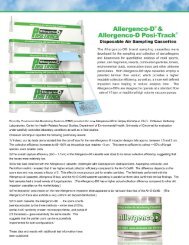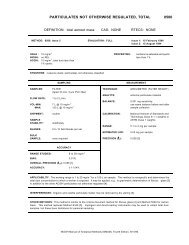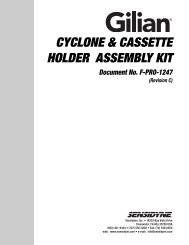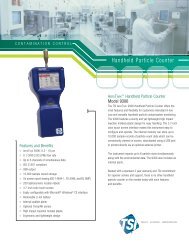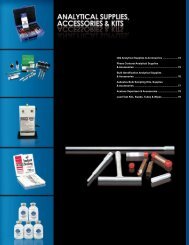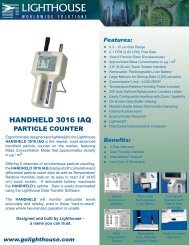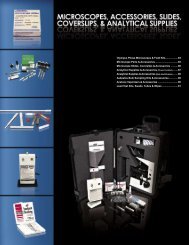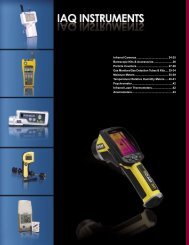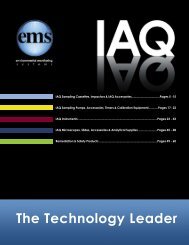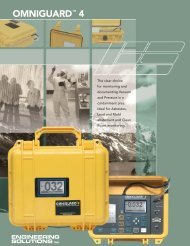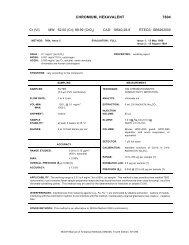NIOSH Method 7400 : Asbestos and Other Fibers by PCM
NIOSH Method 7400 : Asbestos and Other Fibers by PCM
NIOSH Method 7400 : Asbestos and Other Fibers by PCM
You also want an ePaper? Increase the reach of your titles
YUMPU automatically turns print PDFs into web optimized ePapers that Google loves.
ASBESTOS <strong>and</strong> OTHER FIBERS <strong>by</strong> <strong>PCM</strong>: METHOD <strong>7400</strong>, Issue 2, dated 15 August 1994 - Page 10 of 15The above relative st<strong>and</strong>ard deviations apply when the population mean has been determined. It ismore useful, however, for laboratories to estimate the 90% confidence interval on the mean count froma single sample fiber count (Figure 1). These curves assume similar shapes of the count distribution forinterlaboratory <strong>and</strong> intralaboratory results [16].For example, if a sample yields a count of 24 fibers, Figure 1 indicates that the mean interlaboratorycount will fall within the range of 227% above <strong>and</strong> 52% below that value 90% of the time. We can applythese percentages directly to the air concentrations as well. If, for instance, this sample (24 fiberscounted) represented a 500-L volume, then the measured concentration is 0.02 fibers/mL (assuming 100fields counted, 25-mm filter, 0.00785 mm 2 counting field area). If this same sample were counted <strong>by</strong> agroup of laboratories, there is a 90% probability that the mean would fall between 0.01 <strong>and</strong> 0.08fiber/mL. These limits should be reported in any comparison of results between laboratories.Note that the S r of 0.45 used to derive Figure 1 is used as an estimate for a r<strong>and</strong>om group oflaboratories. If several laboratories belonging to a quality assurance group can show that theirinterlaboratory S r is smaller, then it is more correct to use that smaller S r . However, the estimated S r of0.45 is to be used in the absence of such information. Note also that it has been found that S r can behigher for certain types of samples, such as asbestos cement [9].Quite often the estimated airborne concentration from an asbestos analysis is used to compare to aregulatory st<strong>and</strong>ard. For instance, if one is trying to show compliance with an 0.5 fiber/mL st<strong>and</strong>ardusing a single sample on which 100 fibers have been counted, then Figure 1 indicates that the 0.5fiber/mL st<strong>and</strong>ard must be 213% higher than the measured air concentration. This indicates that if onemeasures a fiber concentration of 0.16 fiber/mL (100 fibers counted), then the mean fiber count <strong>by</strong> agroup of laboratories (of which the compliance laboratory might be one) has a 95% chance of being lessthan 0.5 fibers/mL; i.e., 0.16 + 2.13 x 0.16 = 0.5.It can be seen from Figure 1 that the Poisson component of the variability is not very important unlessthe number of fibers counted is small. Therefore, a further approximation is to simply use +213% <strong>and</strong>49% as the upper <strong>and</strong> lower confidence values of the mean for a 100-fiber count.Figure 1. Interlaboratory Precision of Fiber Counts<strong>NIOSH</strong> Manual of Analytical <strong>Method</strong>s (NMAM), Fourth Edition, 8/15/94




